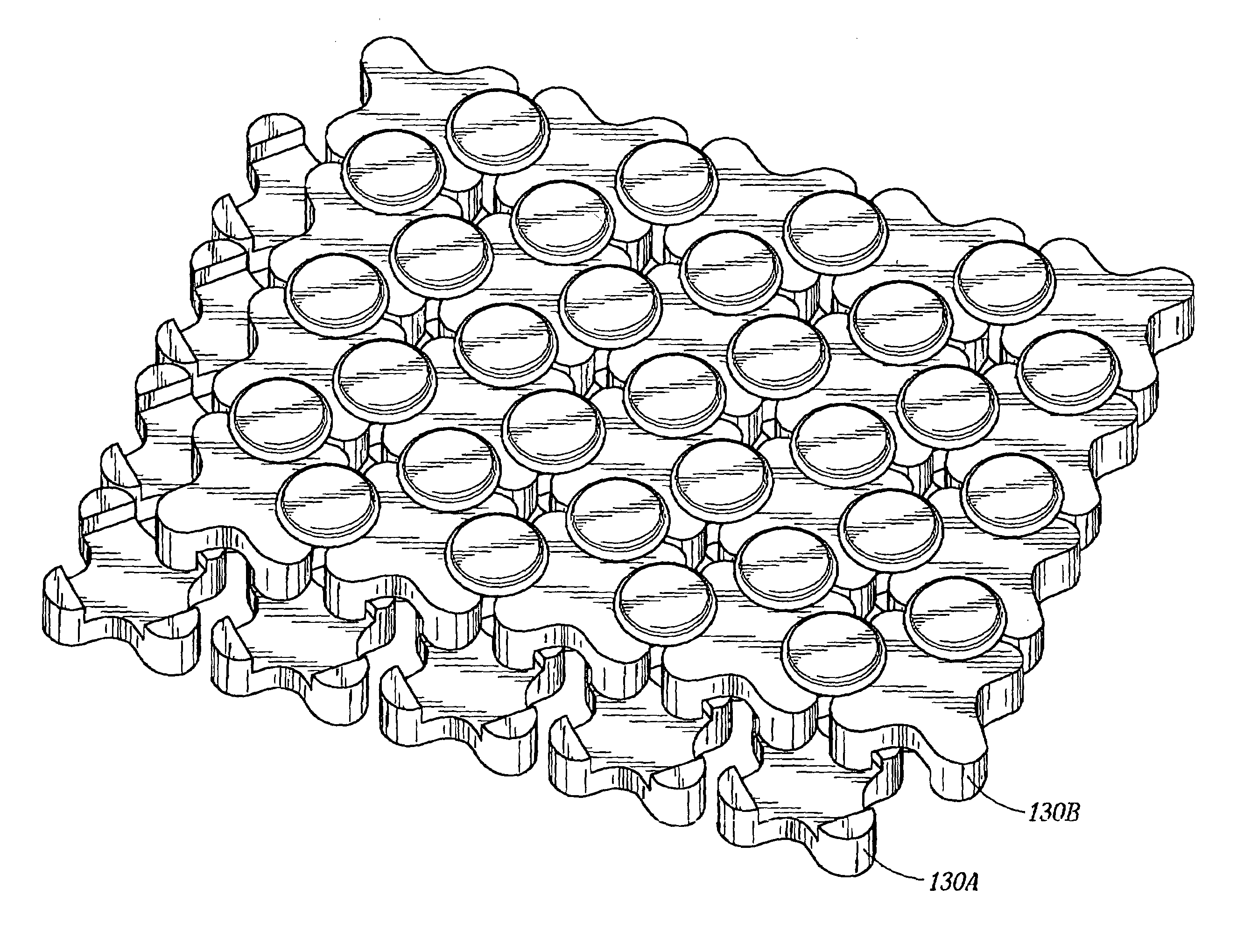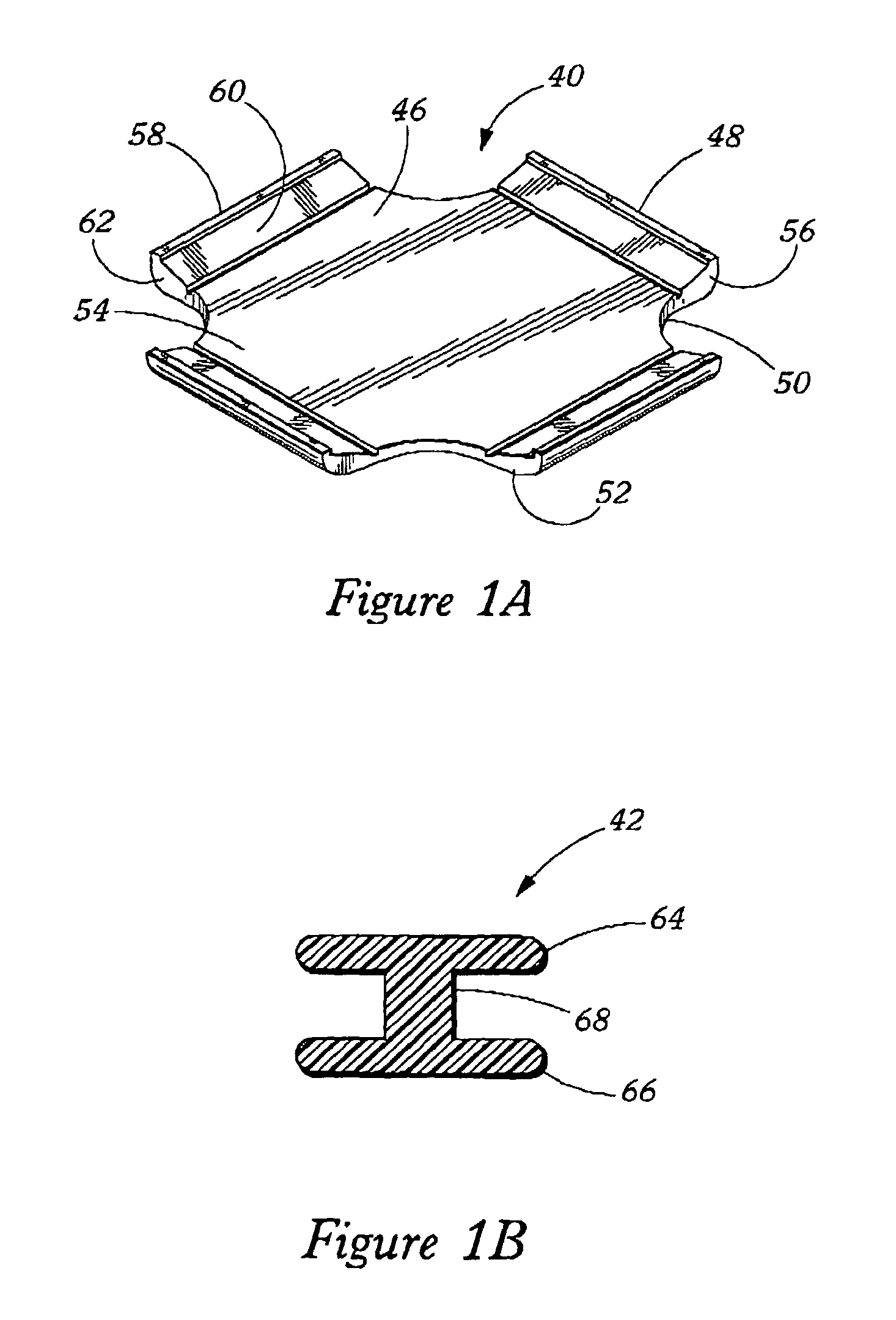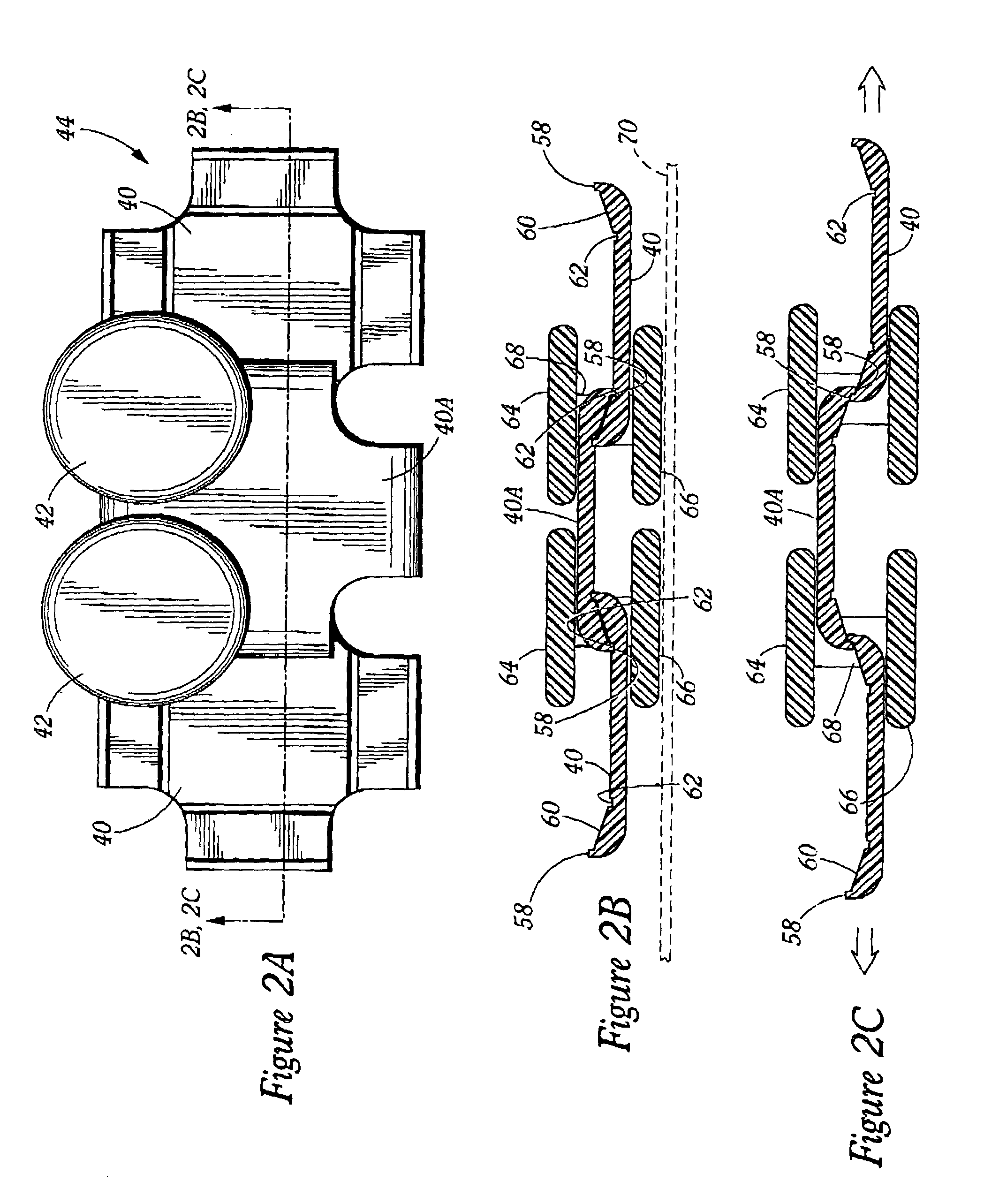Direct forming of non-textile fabric elements from plastic pellets
a technology of non-textile fabric and plastic pellets, which is applied in the direction of lamination, domestic articles, garments, etc., can solve the problems of limited forming process, limited product type, and insufficient utilization of phase forming itself, so as to achieve significant efficiency and reduce time, labor and scrap costs
- Summary
- Abstract
- Description
- Claims
- Application Information
AI Technical Summary
Benefits of technology
Problems solved by technology
Method used
Image
Examples
first embodiment
[0118]Another embodiment of the linkable elements for forming the non-textile fabric using the process of the present invention is shown in FIGS. 14A, 14B, 15 and 16. FIGS. 14A and 14B show top and bottom views of the linkable element 130 made preferably by the solid phase forming process. The structure is similar to that of the first embodiment described herein in FIGS. 1-3, however, there are no sloped cam surfaces included in the inter-engaging surfaces of edges 132 of the plate elements for counter-engagement, and the rivet 134 is integrally formed with the plate element. The straight edges 132 engage one another to keep the elements from moving laterally apart. In this embodiment, only one shape of element 130 is required and is able to be interlinked in a “legs up” (FIG. 14B) and a “legs down” (FIG. 14A) orientation using the direct forming process as described above. The plate element 130 with the integrally formed rivet 132 is formed in one single phase forming process step ...
second embodiment
[0125]At operation 508, which is the application of heat to the pellets, the solid phase forming process actually begins. The application of heat to the pellets is only necessary if the heat generated by the solid phase transformation of the pellet into the mold cavity is not sufficient to create the desired temperature in the pellet. In other words, if the heat generated by the transformation from its shape to that of the mold cavity due to the impact of the striker is not sufficient, as described above, supplemental heat may be necessary. The ultimate temperature to which the pellet should be heated is above the softening point but below the melting point of the particular polymer forming the pellet. After the heat management of the pellet has been performed, the actual solid phase transformation step is performed at operation 510. The solid phase forming step has been described in great detail above, and to reiterate the description above, it can be performed using the rollers as...
PUM
| Property | Measurement | Unit |
|---|---|---|
| Composition | aaaaa | aaaaa |
| Molecular weight | aaaaa | aaaaa |
| Speed | aaaaa | aaaaa |
Abstract
Description
Claims
Application Information
 Login to View More
Login to View More - R&D
- Intellectual Property
- Life Sciences
- Materials
- Tech Scout
- Unparalleled Data Quality
- Higher Quality Content
- 60% Fewer Hallucinations
Browse by: Latest US Patents, China's latest patents, Technical Efficacy Thesaurus, Application Domain, Technology Topic, Popular Technical Reports.
© 2025 PatSnap. All rights reserved.Legal|Privacy policy|Modern Slavery Act Transparency Statement|Sitemap|About US| Contact US: help@patsnap.com



